Name James Luna | Role Artist | |
 | ||
Notable work Artifact Piece (1987), Take A Picture With A Real Indian (1993), Emendatio (2005) Known for Performance art, Installation art | ||
Vantage point take a picture with a real indian james luna performance
James Luna is a Payómkawichum (Luiseño), Ipi (Diegueño) and Mexican-American performance artist, photographer and multimedia installation artist. His work is best known for challenging the ways in which conventional museum exhibitions' depiction Native Americans. With recurring themes of multiculturalism, alcoholism, and colonialism Luna's work is often comedic and theatrical in nature. Today, Luna is a full-time artist and in 2017, he was awarded a Guggenhiem Fellowship.
Contents
- Vantage point take a picture with a real indian james luna performance
- REAL FACES JAMES LUNA LA NOSTALGIA THE ARTIFACT
- Background
- Artwork
- Honors
- Quotes
- References
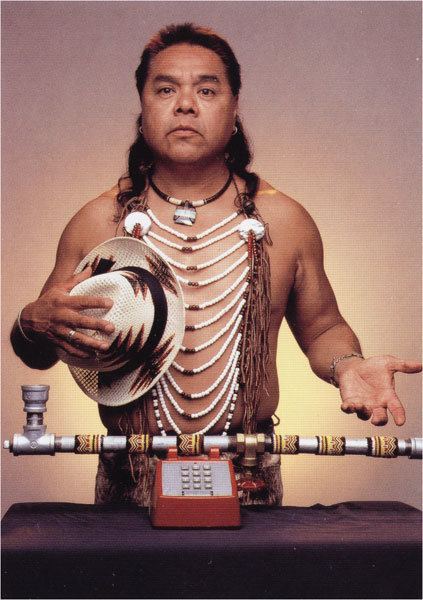
REAL FACES: JAMES LUNA: LA NOSTALGIA: THE ARTIFACT
Background
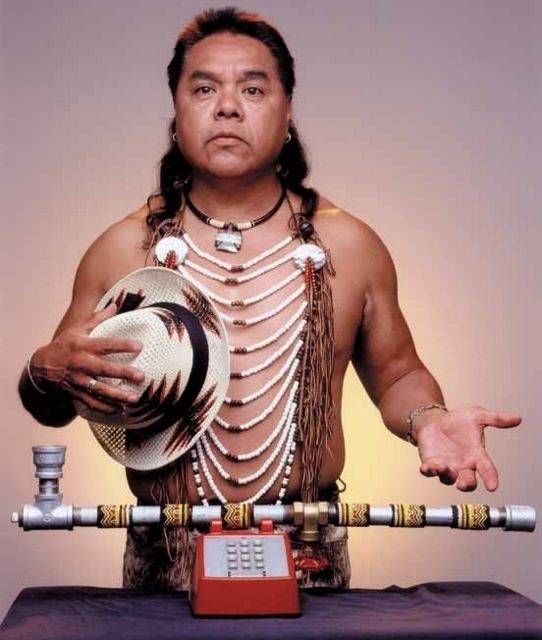
Luna was born in 1950 in Orange, California. He moved to the La Jolla Indian Reservation in California in 1975, where he lives today. In 1976, he earned a Bachelor of Fine Arts degree at the University of California, Irvine, and in 1983, he earned a Master of Science degree in counseling at San Diego State University. In 2011, Luna received an Honorary PhD from the Institute of American Indian Arts. He is an active community member of the La Jolla Indian reservation. He served as the Director of its Education Center in 1987 and the community has often been a focal point of his photography and writing. Luna has taught art at the University of California, San Diego and, he spent 25 years as a full-time academic counselor at Palomar College in San Marcos, California.
Artwork
A self proclaimed "American Indian Ceremonial Clown", "Culture Warrior" and "Tribal Citizen", Luna's artwork is known for challenging racial categories and exposing traditional ways in which museums have displayed Native American Indians as parts of natural history, rather than as contemporary members of American society. While Luna began his art career as a painter, he soon branched out into performance and installation art, which he has been doing for over three decades. He often uses objects, references to American popular culture, and his own body in his work. He has performed over 58 solo exhibitions since 1981, and has partaken in group exhibitions and projects across the United States and the world. His artistry has often been referred to as both disruptive and radical for its stark confrontations with colonialism, violence, sexuality, and identity. Some of his best known pieces include:
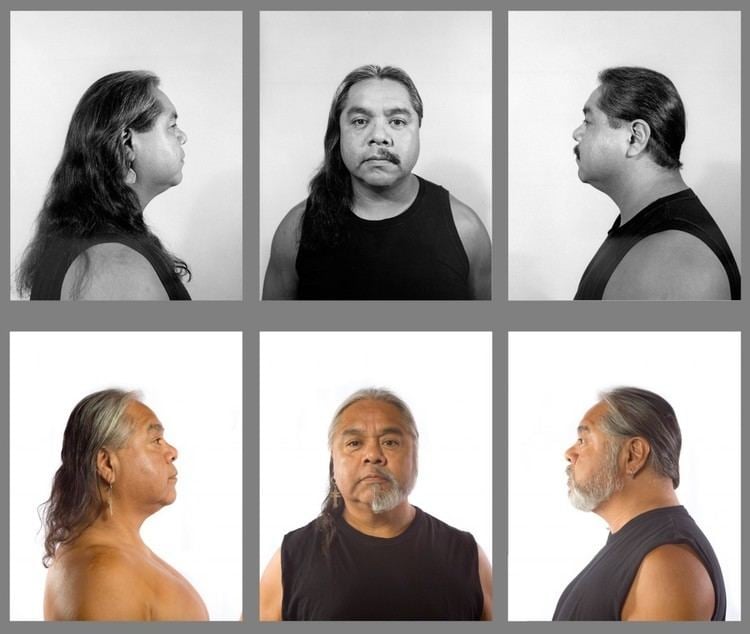
The Artifact Piece (1987/1990)
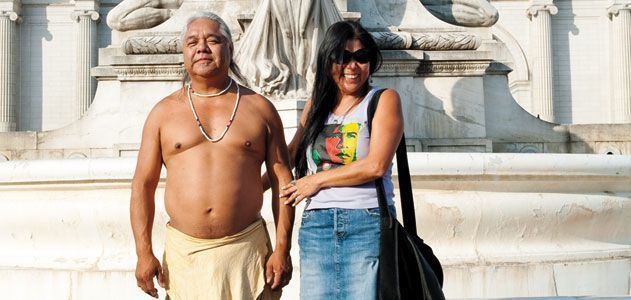
In the 1987 The Artifact Piece at the San Diego Museum of Man, Luna lay mostly naked and still in a display case filled with sand and artifacts, such as Luna's favorite music and books, as well as legal papers and labels describing his scars. The work looked like a museum exhibit and was set in a hall dedicated to traditional ethnographic displays. The marks and scars on his body were acquired while drinking, fighting, or in accidents. By putting himself on display, critics acclaimed Luna's ability to challenge conventional understandings and displays of the Native American identities and presumptions about his own personhood. He also performed The Artifact Piece in 1990 at "The Decade Show" in New York.
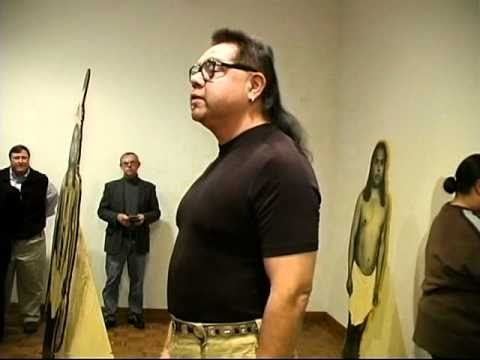
Take a Picture With a Real Indian (1991–93)
In the early 1990s Luna stood outside of Washington DC's Union Station and performed Take a Picture With a Real Indian. Luna describes the performance by saying:
Standing at a podium wearing an outfit, I announce: “Take a picture with a real Indian. Take a picture here, in Washington, D.C. on this beautiful Monday morning, on this holiday called Columbus Day. America loves to say ‘her Indians.’ America loves to see us dance for them. America likes our arts and crafts. America likes to name cars and trucks after our tribes. Take a picture with a real Indian. Take a picture here today, on this sunny day here in Washington, D.C.” And then I just stand there. Eventually, one person will pose with me. After that they just start lining up. I’ll do that for a while until I get mad enough or humiliated enough.
In utilizing and engaging a public audience, Luna taps into common cultural commodification of Native American culture. Such a trend manifests in the idea of the "McIndian"; the idea that Native culture is something that can be massed produced, consumed, and enjoyed without acknowledging the deep history of oppression Native Americans have endured.
In My Dreams: A Surreal, Post-Indian, Subterranean Blues Experience (1996)
In this performance, Luna is acclaimed for having challenged the trope that Native Americans are "peoples of memory" in ways that white culture may envy as being more purely spiritual. In one scene, he performs a traditional dance with crutches to reveal how white demand for Native performance is both limiting and inauthentic. In another, he puts his diabetes on display, giving himself insulin on stage which is said by critics to be emblematic of the binary of the "wild" but "controlled" Native American. His final scene in this performance is a tribute to Dean Martin, which serves to reverse white tributes to Native peoples back on to his white audiences. By having a Native American Indian idolize a white person in a way that is relatively fanatic, Luna reveals the problematic manner in which white people can idolize Native American figures.
Emendatio (2005)
In 2005 the National Museum of the American Indian sponsored him to participate in the Venice Biennale. The piece he created, Emendatio, included three installations, Spinning Woman, Apparitions: Past and Present, and The Chapel for Pablo Tac, as well a personal performance in Venice, Renewal dedicated to Pablo Tac (1822–1841), a Luiseño Indian author and scholar, who went to study in Rome, where he died. Utilizing cultural aspects of both the Lusieno people and his own family, Luna's installations and performance expose the affects that the poor translation of Native identities as well as globalization has had in oppressing narratives of Native American memory while inspiring both "white envy" and "liberal guilt".
Honors
Throughout his career, Luna has received many awards. Including:
Quotes
"I truly live in two worlds.This 'two world' concept once posed too much ambiguity for me, as I felt torn as to whom I was. In maturity I have come to find it the source of my power, as I can easily move between these two places and not feel that I have to be one or the other, that I am an Indian in this modern society.
"Yes.The people are getting up there to have their picture taken with an Indian, just like they would have their picture taken with the bull statue on Wall Street. It’s there for the taking. Indian people always have been fair game, and I don’t think people quite understand that we’re not game. Just because I’m an identifiable Indian, it doesn’t mean I’m there for the taking.
But in the long run I’m making a statement for me, and through me, about people’s interaction with American Indians, and the selective romanticization of us."
